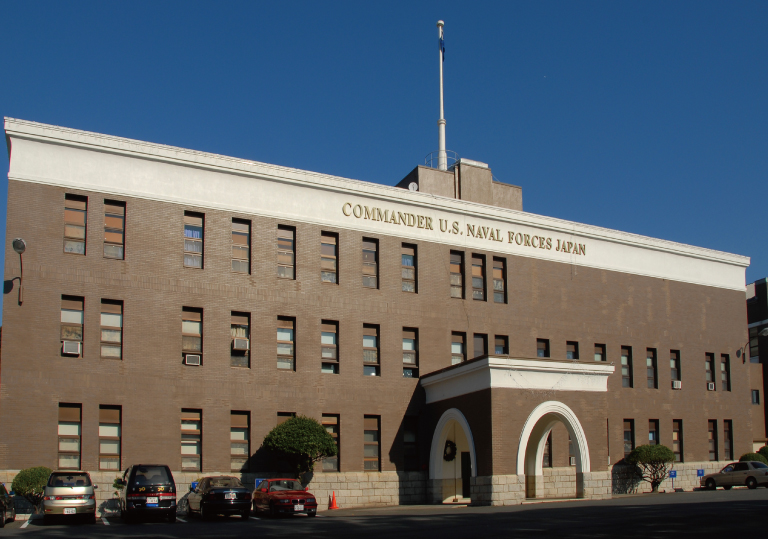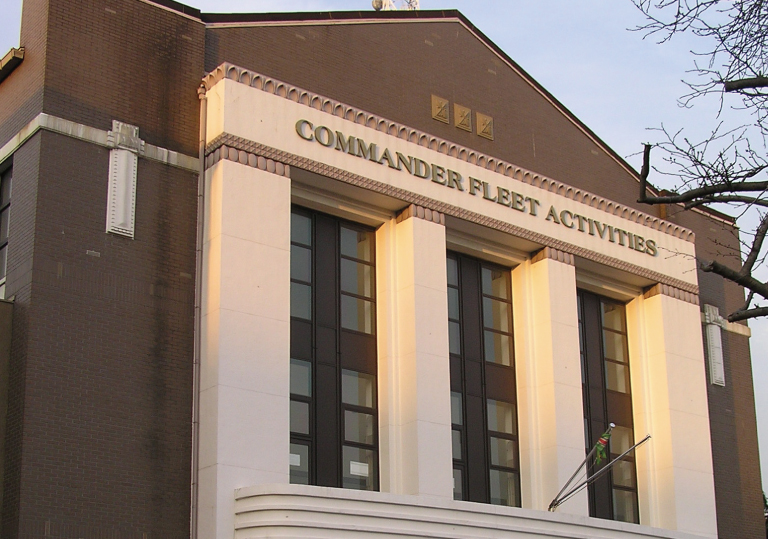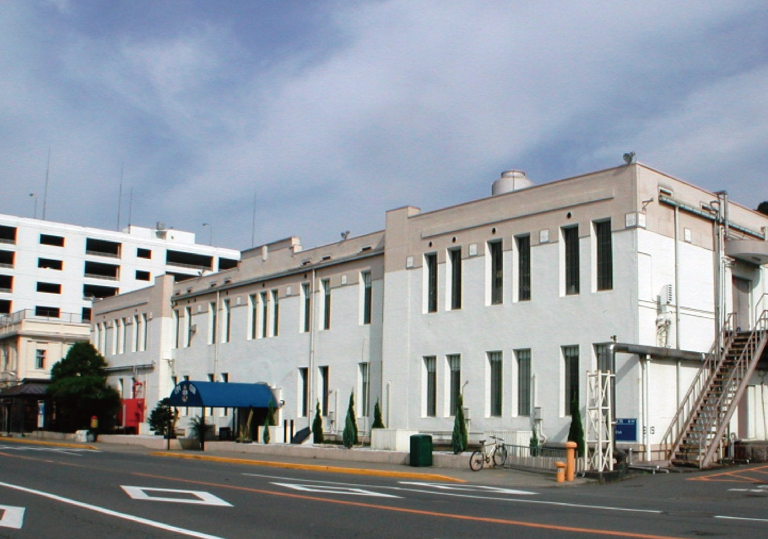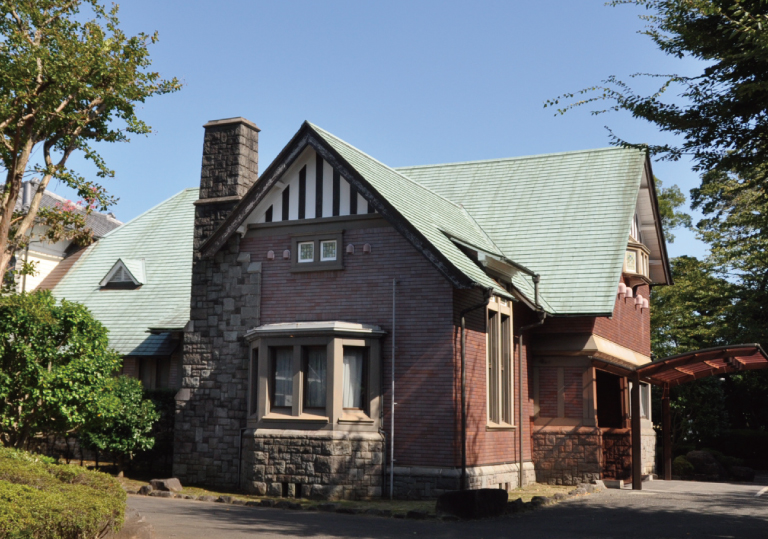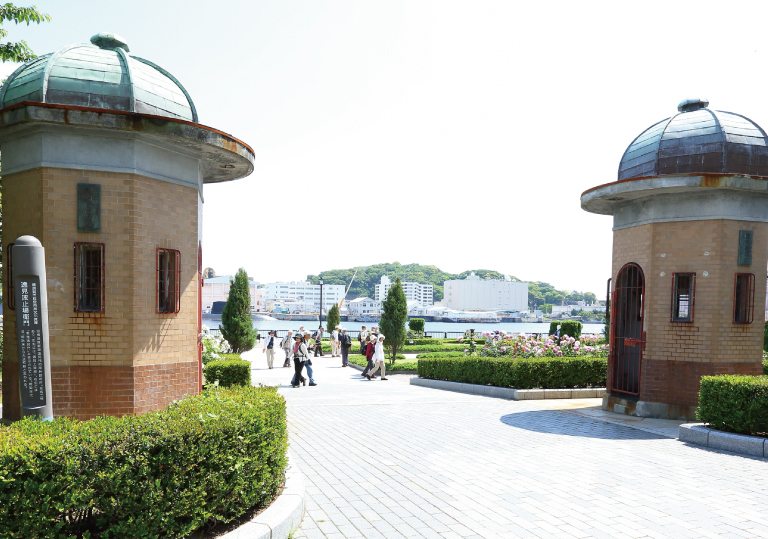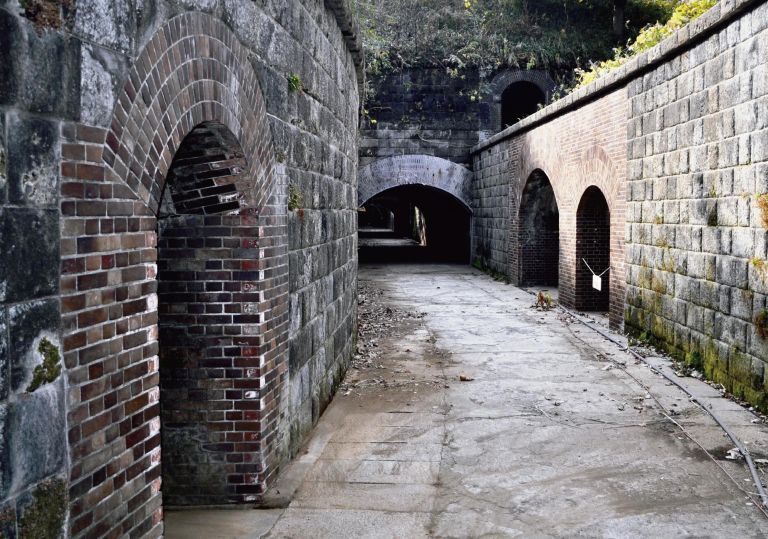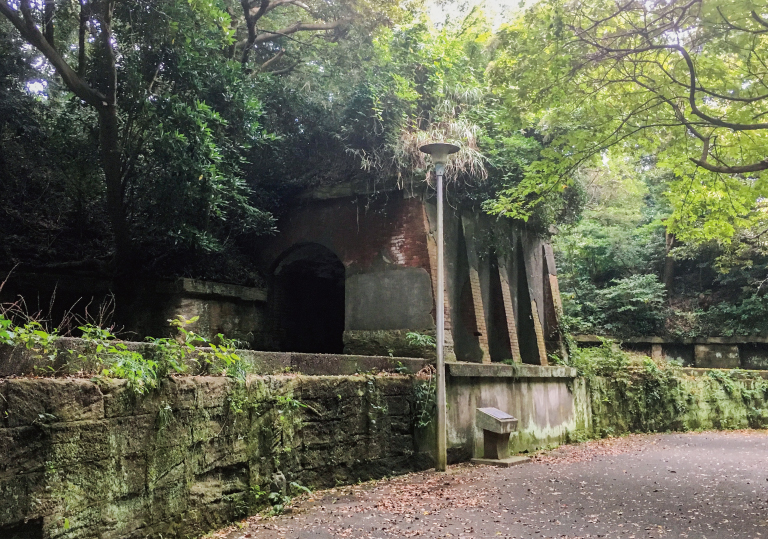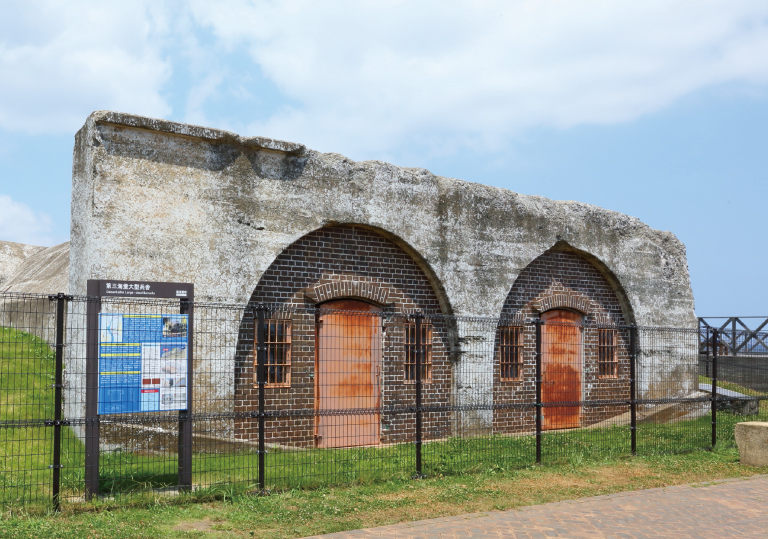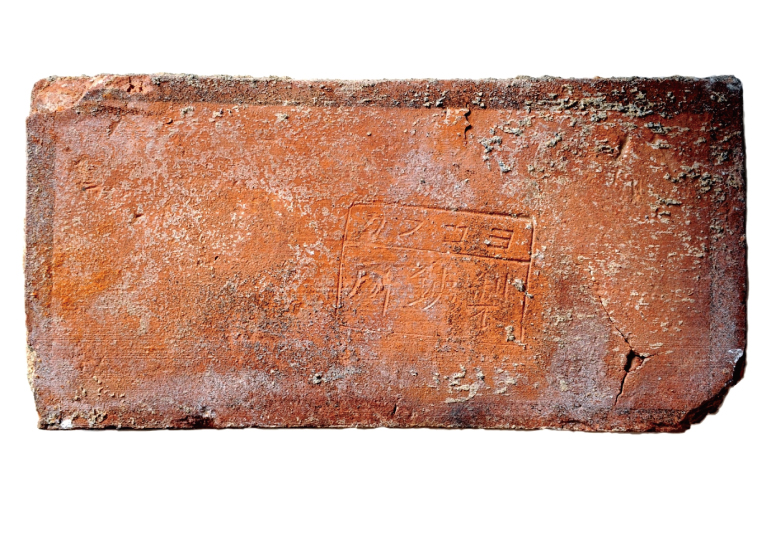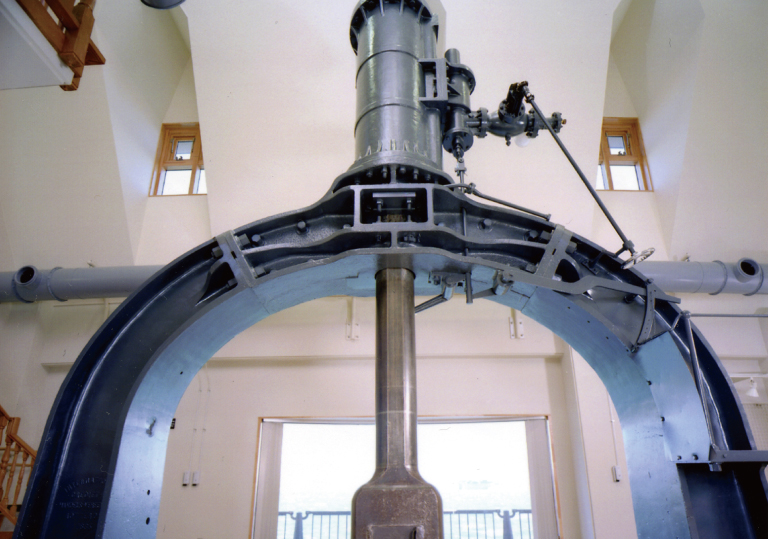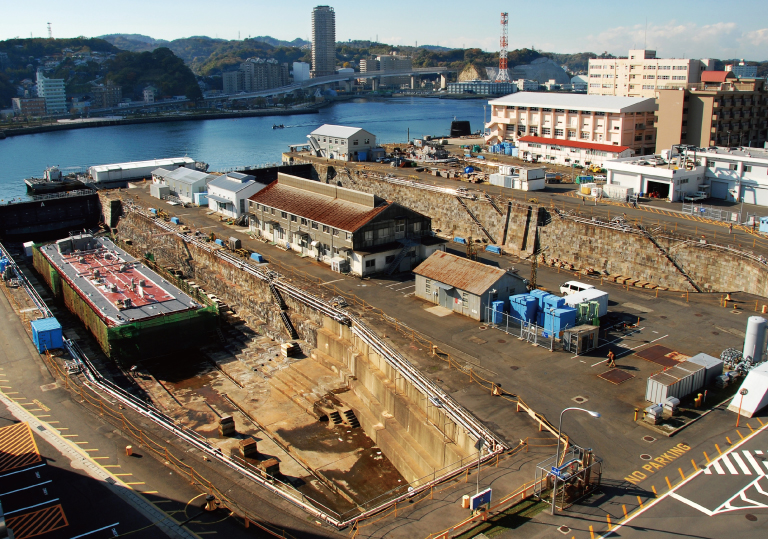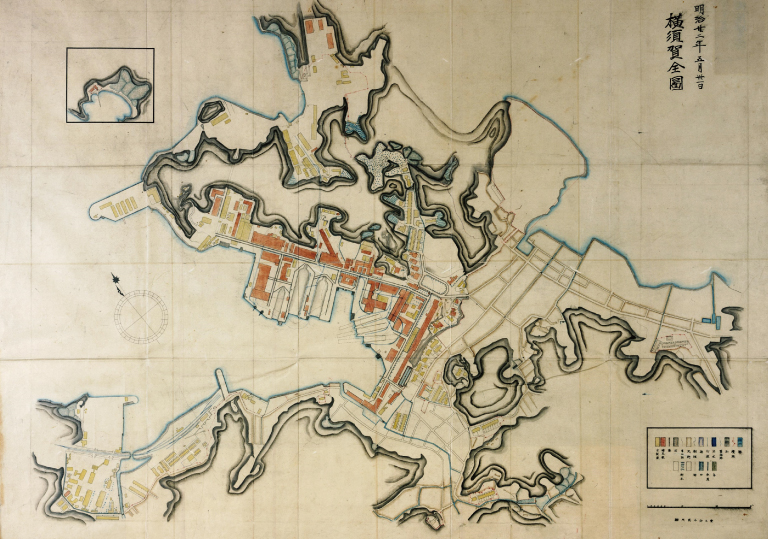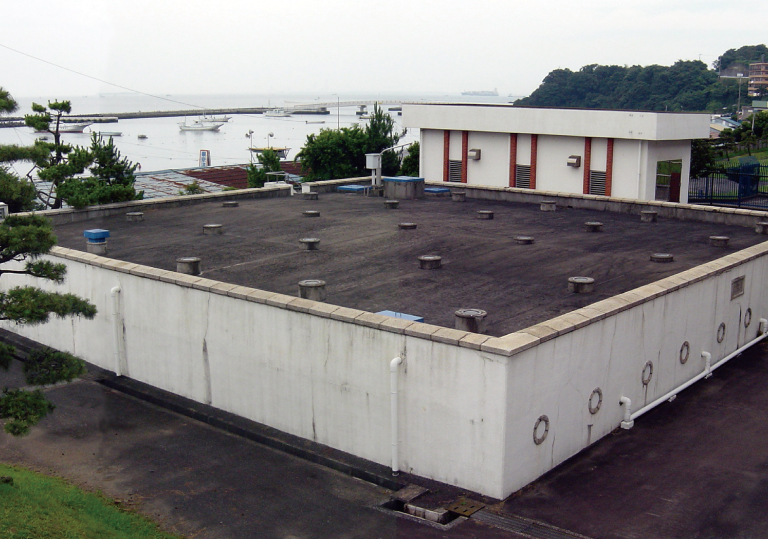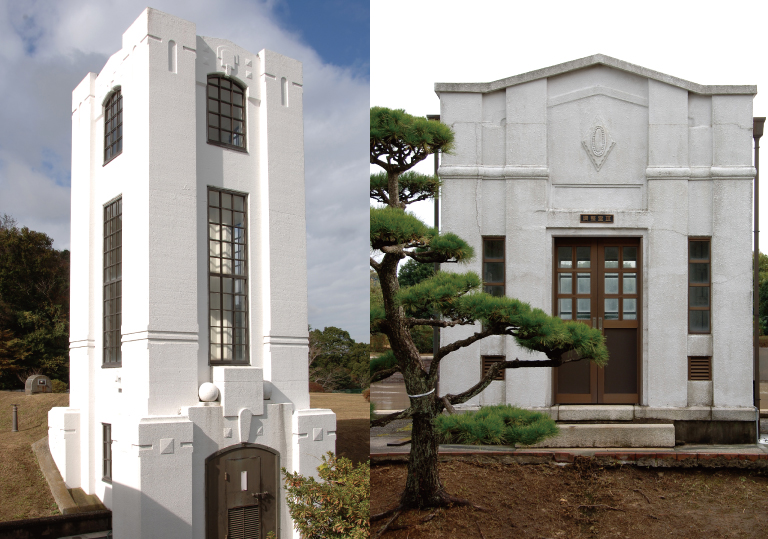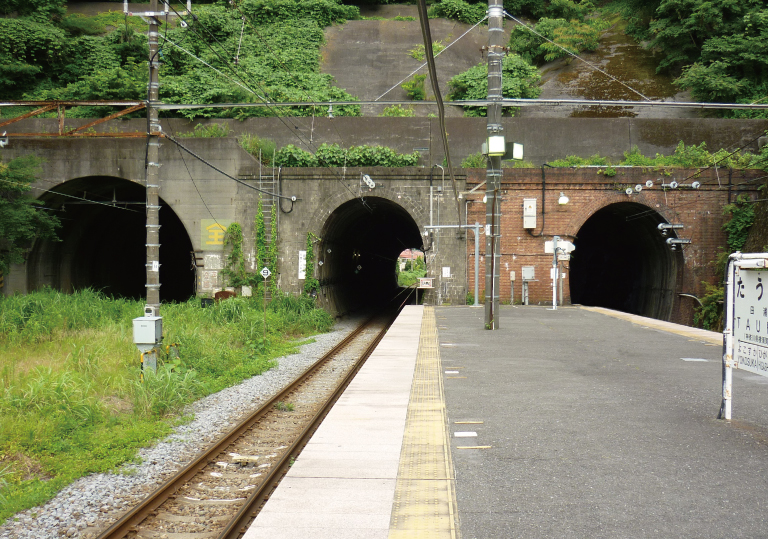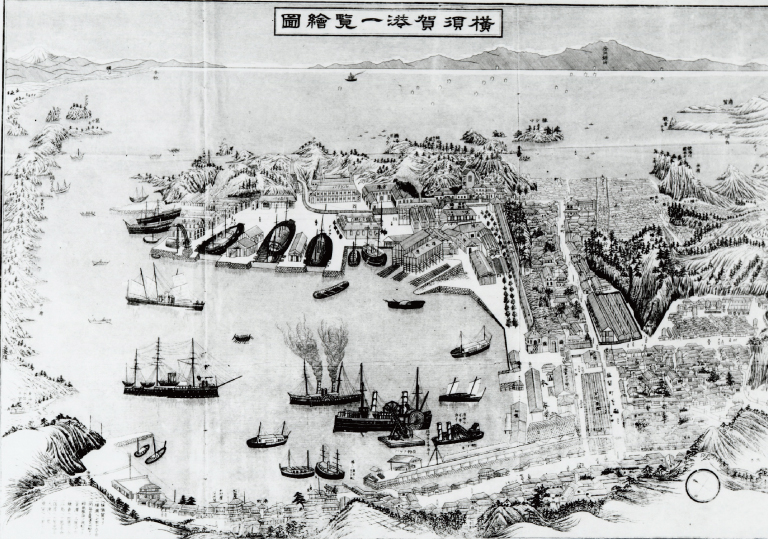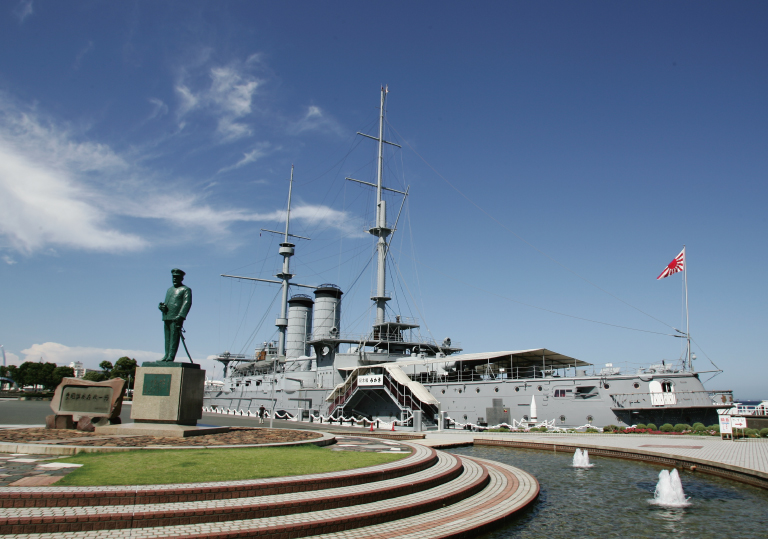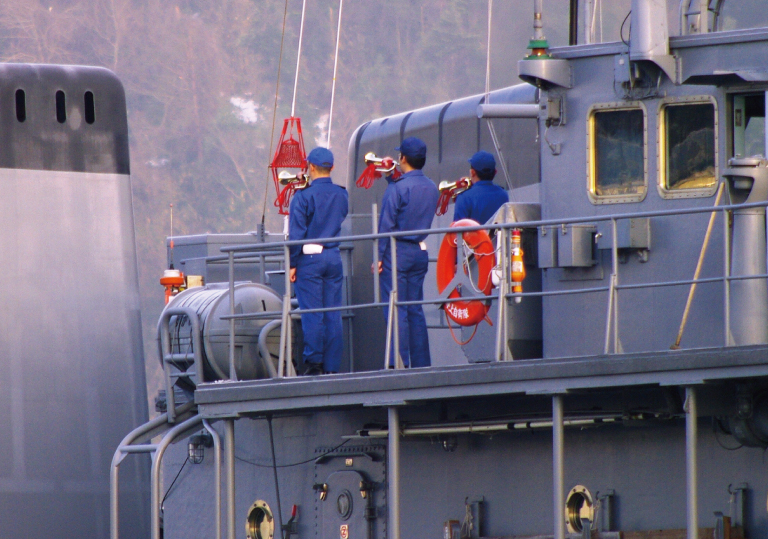
近代化の躍動を体感する日本遺産
Japan Heritage Site Guide
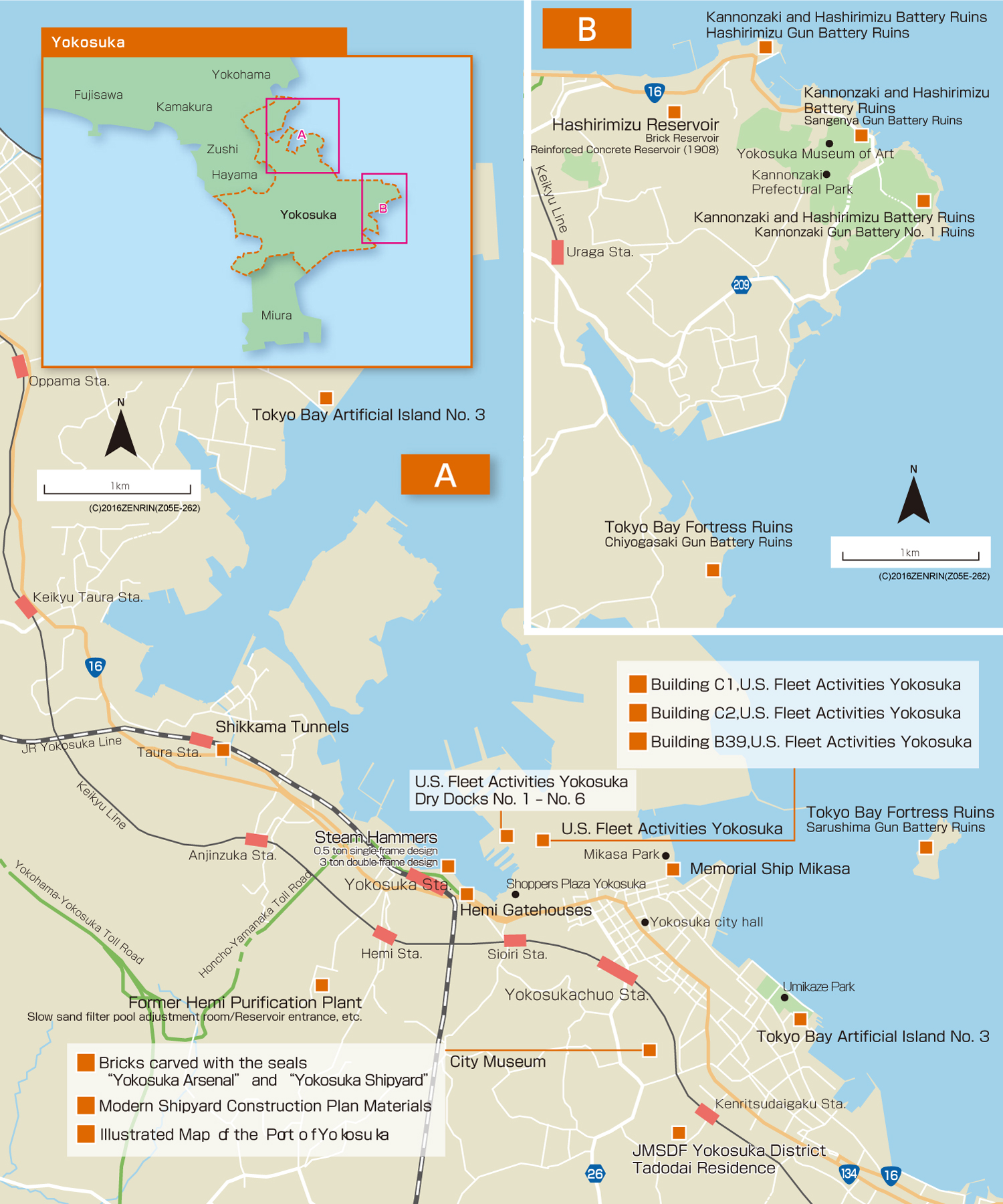

Building C1, U.S. Fleet Activities Yokosuka
This is the former headquarters building of the Imperial Japanese Navy (IJN) that administered the First Naval District. The headquarters building was constructed from brick, but later destroyed by the Great Kanto Earthquake of 1923. It was rebuilt in 1926 with a steel structure. The building was at the forefront of earthquake-proof design and displayed the advanced techniques of the Imperial Japanese Navy at the time.

Building C2, U.S. Fleet Activities Yokosuka
This two-story steel building was constructed in 1934 and was affiliated with the IJN Naval Headquarters. It was very ornate for a building constructed following the Great Kanto Earthquake and the nameplates for the IJN Auditorium and the Ship Control Administration Building are still preserved at the entrance.

Building B39, U.S. Fleet Activities Yokosuka
This building was located by the entrance of the Yokosuka Shipyard. After the Great Kanto Earthquake, the second iteration opted for a steel structure over its former brick construction and was rebuilt in 1927. Among the four historic port cities, Yokosuka was unique in incorporating this technique during the post-earthquake recovery. The reconstructed buildings displayed the advanced techniques of the Imperial Japanese Navy and were at forefront of earthquake-proof design.

JMSDF Yokosuka District Tadodai Residence
This was the former house of the Yokosuka Naval Station’s Commander-in-chief. It was built atop of a hill overlooking the Tokyo Bay and designed by Kotaro Sakurai. The house was completed in 1913 and expresses the fusion of western and eastern architectural design.

Hemi Gatehouses
These gatehouses reflect the history and image of the old naval port. Although they were constructed around the closing days of the Meiji era and start of the Taisho era (1912), the nameplates still remain indicating “Hemi Landing” (Hemi Jorikuba) and “Hemi Naval Port” (Gunko Hemi-mon).

Tokyo Bay Fortress Ruins
①Sarushima Gun Battery Ruins ②Chiyogasaki Gun Battery Ruins
These two gun batteries were among the twenty that defended the capital and the Yokosuka Naval Port. The Sarushima Gun Battery was constructed in 1881 and the Chiyogasaki Gun Battery was constructed in 1892. These sites reveal how the technology and techniques between the sites had advanced over time. Each site shows variations and advancements in stonemasonry, brickwork, and the availability of concrete during the time.

Kannonzaki and Hashirimizu Battery Ruins
①Kannonzaki Gun Battery No.1Ruins ②Hashirimizu Gun Battery Ruins
These batteries are located at the mouth of the Tokyo Bay and defend the capital and naval ports. The Kannonzaki Gun Battery No. 1 started construction in 1880 and was completed in 1884. It was the first western-style gun battery in Japan and reveals how different the Tokyo Bay coastal defenses were at the time.

Tokyo Bay Artificial Island No. 3
The third artificial island in the Tokyo Bay was set up as a coastal battery to defend the capital and naval ports. Although it was submerged by the Great Kanto Earthquake, some of the remaining structures were recovered from the water and placed on display at two parks in Yokosuka. Advanced structural engineering techniques at the time such as the use of reinforced concrete can be seen at the sites.

Bricks carved with the seals
“Yokosuka Arsenal” and “Yokosuka Shipyard”
These red bricks were manufactured on-site according to French standards during the construction of the Yokosuka Arsenal and are some of the oldest bricks manufactured in Japan. Many of the buildings in the port were made of brick and timber framing.

Steam Hammers
①0.5ton single-frame design ②3ton double-frame design
During the construction of the Yokosuka Arsenal in 1865, steam hammers were imported from the Netherlands to manufacture and repair warships. This important heritage records the first steps Japan took towards modernizing shipbuilding and industry. The 3 ton double-frame steam hammer was in service for around 130 years until 1996.

U.S. Fleet Activities
Yokosuka Dry Docks No.1– No.6
The scene of dry docks being used to repair ships is iconic of naval ports. The first three dry docks were constructed from stone and the latter three were constructed from concrete. The progressing increase in size of the docks show how ships grew in size over the course of history.

Modern Shipyard Construction Plan Materials
These documents show how the Imperial Japanese naval engineers absorbed and demonstrated their knowledge of western-style shipbuilding. They were passed down by the engineers of the Yokosuka Shipyard and also contain material related to other areas such as the Port of Kure and the Port of Sasebo.

Hashirimizu Reservoir
①Brick Reservoir ②Reinforced Concrete Reservoir (1908)
This reservoir was complete in 1876 and stretched over 7 km in order to supply water to the Yokosuka Shipyard. Afterwards, it was expanded to supply drinking water for the populace with the development of the Hanbara Water System. It is a unique reservoir due to its low elevation and view of the sea.

Former Hemi Purification Plant
①Slow sand filter pool adjustment room
②Reservoir entrance, etc.
After the Russo-Japanese War, the Hanbara Water System began construction in 1912 to provide a steady waterway for the naval port. It is located atop of a hill overlooking the port. Although it is a reinforced concrete structure, the chalk-colored tower at the reservoir entrance reflects a more archaic time period.

Shikkama Tunnels
A rare scene where three tunnels from different eras in Japanese history are lined up side-by-side. The middle tunnel first opened up in 1889 (Meiji) and signified the opening of the Yokosuka Line. The right tunnel followed in 1924 (Taisho) and was built to coincide with the development of inbound and outbound railway tracks. The final tunnel was built in 1943 (Showa) to transport wartime munitions. Yokosuka has the most tunnels nationwide and this scenery symbolizes that fact.

Illustrated Map of the Port of Yokosuka
These illustrated sightseeing maps show the development of the naval port and the city. They were published between 1879 and 1906 and nine versions of this map are currently confirmed to exist.

Memorial Ship Mikasa
This 1902 pre-dreadnought warship was the flagship of the Combined Fleet under Admiral Heihachiro Togo and was pivotal in defeating the Russian Baltic Fleet during the Battle of Tsushima in 1905. Despite being destroyed and recovered several times, the ship has endured throughout history. In 1926, it was restored and preserved as a memorial ship where it has remained in Yokosuka to this day.

Naval Base Bugle Call
The bugle call of the four historic naval port cities carries on the tradition of the historic naval bases of Japan. This call is sounded onboard ships when hoisting or lowering the national flag or JMSDF flag at morning, noon, and evening.
